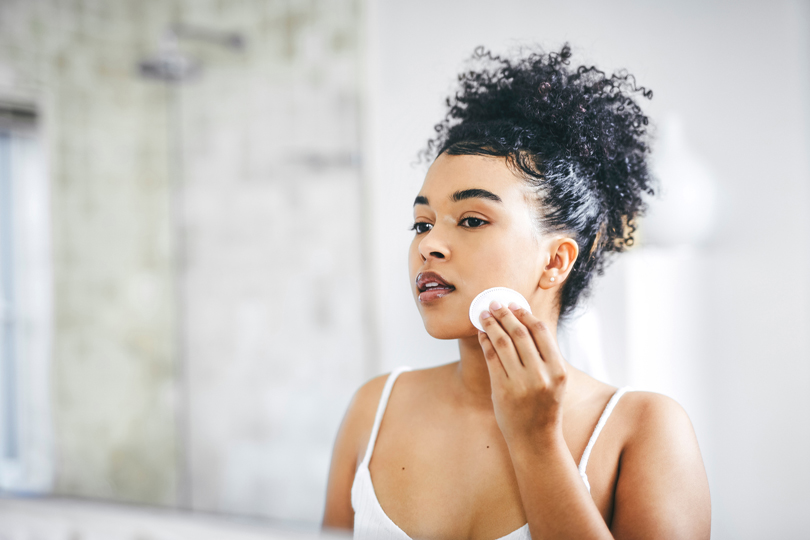In today’s skincare landscape, where customization is key, the rise of milk toner has caught the attention of beauty enthusiasts seeking gentler, more nourishing formulas. Unlike traditional watery toners, a milk toner typically features a creamy texture packed with hydrating and soothing ingredients, making it ideal for dry, sensitive, or barrier-compromised skin. If you’re looking to refine your routine with something that balances, softens, and calms without stripping your skin, this trending toner might just be the perfect match.

What Is a Regular Toner?
Regular toners have long been skincare staples, traditionally used to remove leftover impurities post-cleansing. But today’s toners are far more sophisticated. They’re lightweight, water-based, and fast-absorbing—designed to rebalance your skin and address specific concerns.
Types of regular toners include:
- Astringent toners: Often alcohol- or witch hazel-based, ideal for oily or acne-prone skin.
- Hydrating toners: Formulated with humectants like hyaluronic acid for a moisture boost.
- Exfoliating toners: Contain AHAs, BHAs, or PHAs to slough away dead skin cells.
- Soothing toners: Enriched with ingredients like aloe or chamomile to calm irritation.
Texture: Think of regular toners as water-light—perfect for layering under serums and moisturizers.
What Is a Milky Toner?
Milky toners are like the plush cousins of regular toners. Creamy, cushiony, and deeply hydrating, they often blur the lines between a toner and an essence.
They’re designed to soothe, nourish, and strengthen the skin barrier—making them a go-to for dry, sensitive, or mature skin types.
Hero ingredients in milky toners:
- Moisturizing agents (glycerin, ceramides, squalane)
- Emollients (oat milk, jojoba oil)
- Calming botanicals (centella asiatica, chamomile, rice water)
- Microbiome-friendly ingredients (prebiotics, probiotics)
Texture: Lotion-like and comforting—these toners leave your skin feeling soft, dewy, and balanced without any greasy residue.
Milky Toner vs. Regular Toner: A Side-by-Side Comparison
| Feature | Regular Toner | Milky Toner |
|---|---|---|
| Texture | Thin, watery, fast-absorbing | Creamy, lotion-like, richer |
| Main Purpose | Rebalance pH, exfoliate, lightly hydrate | Deep hydration, barrier support, soothing |
| Best For | Oily, combination, acne-prone skin | Dry, sensitive, dehydrated, or mature skin |
| Common Ingredients | Astringents, exfoliants, humectants | Emollients, ceramides, calming extracts |
| Skin Finish | Lightweight, barely there | Soft, plump, nourished |
Looking for expert-backed comparisons of toners? Byrdie breaks down different toner textures and when to use them.
Which One Should You Use?
Choose a regular toner if:
- You struggle with excess oil or breakouts
- You want a lightweight product that absorbs fast
- You use active ingredients like glycolic or salicylic acid to exfoliate
Choose a milky toner if:
- Your skin feels dry, tight, or easily irritated
- You crave a nourishing, silky texture
- You’re looking to boost long-term hydration and support your skin barrier
Need product recommendations? Allure shares a list of dermatologist-approved toners for every skin type.
Some skincare lovers even use both—a regular toner a few times a week for exfoliation, and a milky toner daily for hydration and balance.
Final Thoughts: Do You Really Need a Toner?
Toners aren’t absolutely essential—but they can be powerful. The right toner can rebalance, hydrate, exfoliate, or calm your skin—all in just a few swipes.
If your skin is dry or feels stripped after cleansing, a milky toner might be your hydration hero. If you’re chasing that fresh, clean, non-greasy finish, stick to a regular toner.
At the end of the day, it’s not about trends—it’s about how your skin feels. And when your toner matches your skin’s needs, the glow-up speaks for itself.
Also Read : 5 Gorgeous Ways to Utilize Haldi and Chandan for Firm, Radiant Skin



